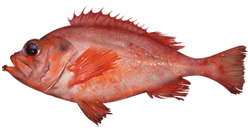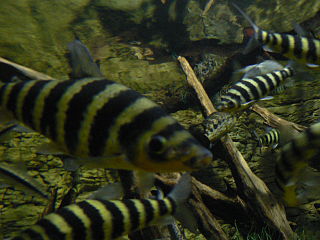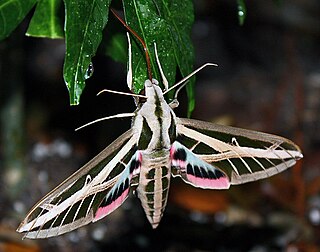Related Research Articles

The numbat, also known as the noombat or walpurti, is an insectivorous marsupial. It is diurnal and its diet consists almost exclusively of termites.

The banded hare-wallaby, mernine, or munning is a marsupial currently found on the islands of Bernier and Dorre off western Australia. Reintroduced populations have recently been established on islands and fenced mainland sites, including Faure Island and Wadderin Sanctuary near Narembeen in the central wheatbelt.

The (American) five-lined skink is a species of lizard in the family Scincidae. The species is endemic to North America. It is one of the most common lizards in the eastern U.S. and one of the seven native species of lizards in Canada.

The Bonelli's eagle is a large bird of prey. The common name of the bird commemorates the Italian ornithologist and collector Franco Andrea Bonelli. Bonelli is credited with gathering the type specimen, most likely from an exploration of Sardinia. Some antiquated texts also refer to this species as the crestless hawk-eagle. Like all eagles, Bonelli's eagle belongs to the family Accipitridae. Its feathered legs marked it as member of the Aquilinae or booted eagle subfamily. This species breeds from Southern Europe, Africa on the montane perimeter of the Sahara Desert and across the Indian Subcontinent to Indonesia. In Eurasia, this species may be found as far west as Portugal and as far east as southeastern China and Thailand. It is usually a resident breeder. The Bonelli's eagle is often found in hilly or mountainous habitats, with rocky walls or crags, from sea level to 1,500 m (4,900 ft). Habitats are often open to wooded land and can occur in arid to semi-moist climate. This eagle, though it can be considered partially opportunistic, is something of a specialist predator of certain birds and mammals, especially rabbits, galliforms and pigeons. On evidence, when staple prey populations decline or are locally scarce, Bonelli's eagle switch to being an opportunistic predator of a wide variety of birds. Despite its persistence over a large range and its continued classification as a least concern species by the IUCN, the Bonelli's eagle has declined precipitously in various parts of its range, including almost all of its European distribution, and may face potential local extinction. The species' declines are due to widespread habitat destruction, electrocution from electricity pylons as well as persistent persecution.

The banded krait is a species of elapid snake found on the Indian Subcontinent, in Southeast Asia, and in southern China. It is the largest species of krait, with a maximum length up to 2.7 m.

The banded sand catshark is a catshark of the family Scyliorhinidae found in the Indo-West Pacific Ocean, endemic to northern Australia between latitudes 10° S and 21° S, at depths between 27 and 120 metres. Its length is up to 45 centimetres (18 in).

The striped smooth-hound is a houndshark of the family Triakidae, found on the continental shelves of the subtropical southwest Atlantic from southern Brazil to northern Argentina between latitudes 30° S and 47° S, from the surface to 250 m. It can grow up to a length of 1.77 m. The reproduction of this shark is Ovoviviparous, with the length at birth up to 39 cm.

The brown goshawk is a medium-sized bird of prey in the family Accipitridae found in Australia and surrounding islands.

The blacktip grouper, also known as the redbanded grouper, blacktipped cod, black-tipped rockcod, footballer cod, red-barred cod, red-barred rockcod, scarlet rock-cod or weathered rock-cod, is a species of marine ray-finned fish, a grouper from the subfamily Epinephelinae which is part of the family Serranidae, which also includes the anthias and sea basses. It is found in the tropical Indo-Pacific region. It is the type species of the genus Epinephelus.

The banded quail is a species of bird in the family Odontophoridae. It is found only in Mexico where its natural habitats are subtropical or tropical dry forests, subtropical or tropical dry shrubland, subtropical or tropical high-altitude shrubland, and heavily degraded former forest.

The bar-breasted honeyeater is a species of bird in the family Meliphagidae. It is endemic to northern Australia, with a breeding season from late spring to winter. It feeds primarily on nectar and invertebrates.

Oncopeltus fasciatus, known as the large milkweed bug, is a medium-sized hemipteran of the family Lygaeidae. It is distributed throughout North America, from Central America through Mexico and the Caribbean to southern areas in Canada. Costa Rica represents this insect's southern limit. It inhabits disturbed areas, roadsides, and open pastures. Due to this widespread geographic distribution, this insect exhibits varying life history trade-offs depending on the population location, including differences in wing length and other traits based on location.

Salarias fasciatus, commonly known as the jewelled blenny or lawnmower blenny is a benthic, neritic, marine fish species endemic to Australasia. Despite being known as the lawnmower blenny, due to its propensity to consume algae growth in aquaria, it is principally a detritivore, with plant material making up only about 15% of its diet. The lawnmower blenny camoflauges with its surroundings, even changing color to hide itself from predators.
Trimeresurus fasciatus is a venomous pit viper species endemic to Djampea Island, Indonesia. No subspecies are currently recognized. Common names include: banded pitviper and banded tree viper.

The Acadian redfish, also known as the Atlantic redfish, Acadian rockfish, or Labrador redfish, is a species of marine ray-finned fish belonging to the subfamily Sebastinae, the rockfishes, part of the family Scorpaenidae. It is native to the deep waters of the northwestern Atlantic.

Arion fasciatus, also known by its common name the Orange-banded Arion, is a species of air-breathing, completely shell-less, land slug, a terrestrial pulmonate gastropod mollusk in the family Arionidae, the round-back slugs. The species was first described by Sven Nilsson in 1823.

Liguus fasciatus, the Liguus Tree Snails, also known as "living jewels", is a species of air-breathing land snail, a tree snail, a terrestrial pulmonate gastropod mollusk in the family Orthalicidae.

Leporinus fasciatus, commonly known as the banded leporinus or the black-banded leporinus, is a species of characin in the family Anostomidae. L. fasciatus is native to the Amazon Basin in South America, but has been introduced into the US states of Florida and Hawaii. It has not been observed from Hawaii as of 2005; the species is thought to have been extirpated in the region.

Eumorpha fasciatus, the banded sphinx, is a moth of the family Sphingidae. The species was first described by Johann Heinrich Sulzer in 1776.
Ipochus insularis is a species of beetle in the family Cerambycidae. It was described by Blaisdell in 1925. It is known from Baja California, in Mexico.
References
- ↑ BioLib.cz - Ipochus fasciatus. Retrieved 8 September 2014.